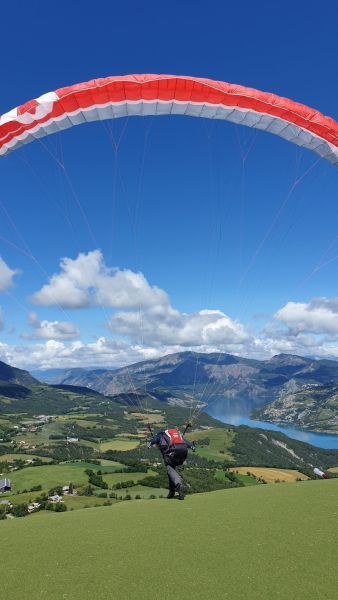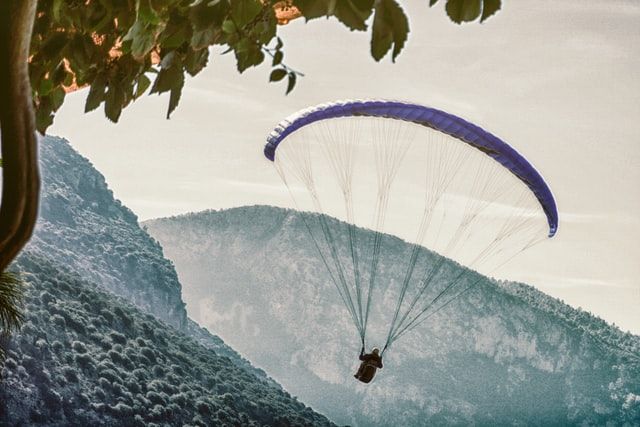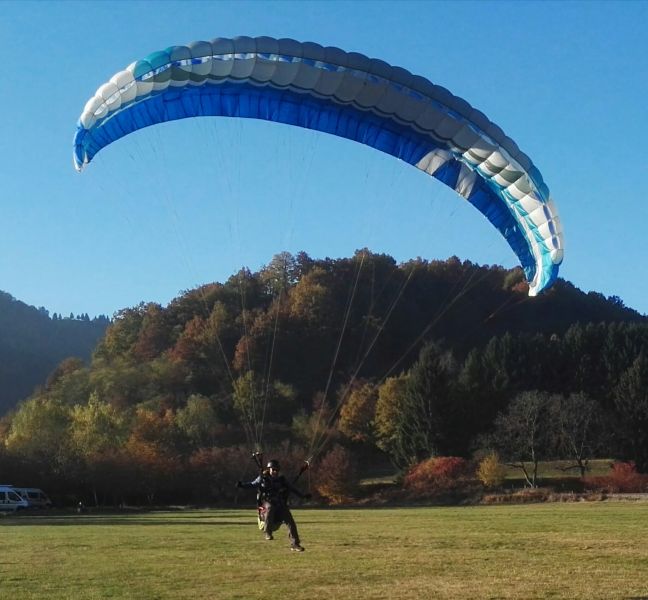What is paragliding
Paragliding or parapente (the French term) is a glider sport. One flies with a parakite or paraglider. Although a paragliding wing bears some resemblance to a parachute, the operation and purpose are very different. A parachute is meant to break a fall, so a slowed down fall to the ground. With paragliding the objective is to stay in the air, to fly. A paragliding wing generates lift through a forward motion in the air, just like a glider. A paragliding wing weighs about 5 kg, and is carried in a backpack.

Take-Off
One does not jump off or out of anything with a paragliding wing, take-off is done by running down a slope. As a result, the canvas fills with air and forms a wing shape. Once the lift is high enough (already after a few meters) one lifts from the ground by itself… And you fly!

Flying
Once in the air, just like gliders or deltas do, one can look for rising air in the form of thermals or dynamic ascent winds. This makes it possible to stay in the air for hours or to travel long distances.

Landing
Thanks to a simple and precise control, a paragliding wing can land on the smallest terrains. This happens without shock; a few steps are enough to gently stop. The training starts with learning the basic techniques on training slopes. There you learn to start and land by doing practice flights of several tens of meters far, at most a few meters above the ground. After that, the high flights training will follow, during which much longer flights are practiced.
Would you like to learn to fly yourself? That’s possible! Read here how the paragliding training at Airsport works.
